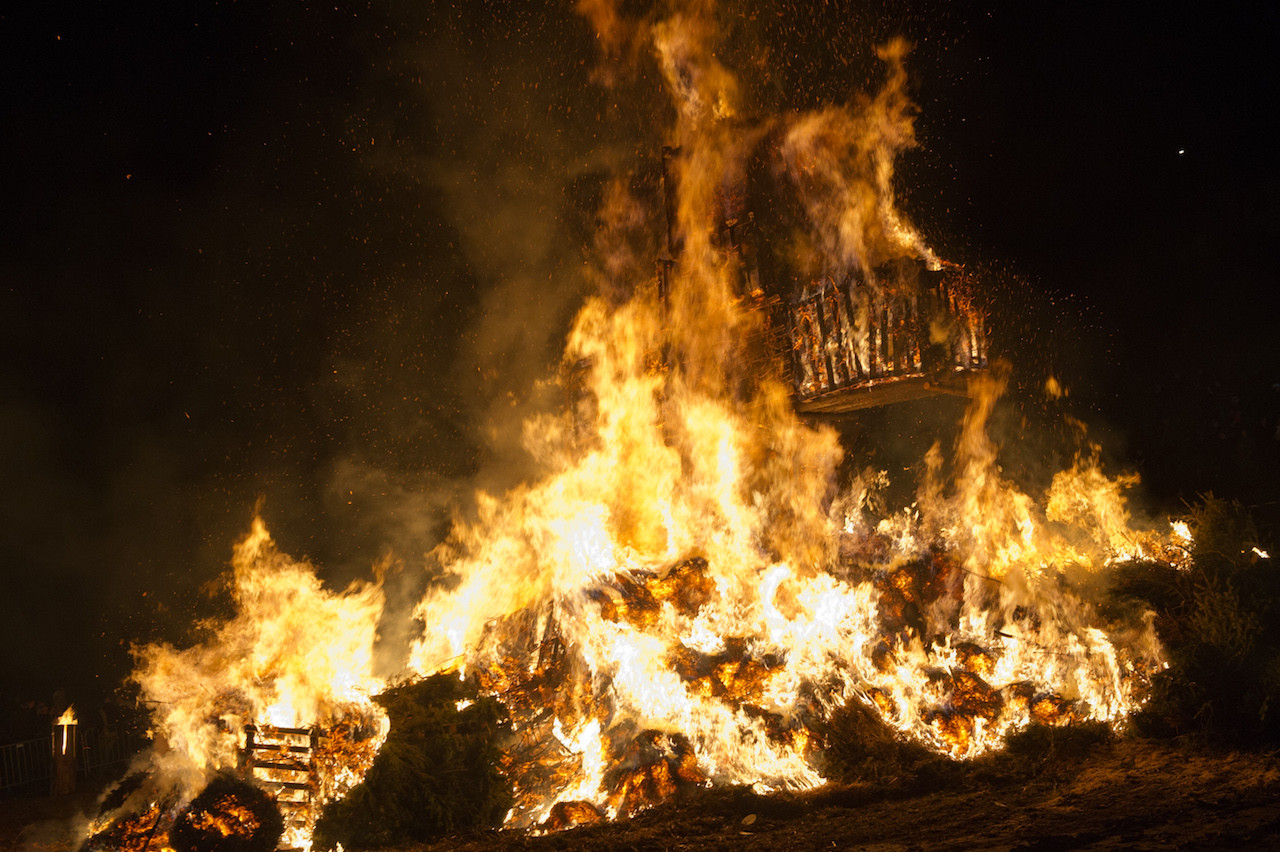Every “Buergbrennen,” my mother stood me on the closed toilet lid in the bathroom and through the window, we watched the blazing flames of the traditional bonfire. According to the Luxembourgish folk (and my mum), the massive burning cross, typically constructed out of straw, heaps of wood and pine branches, chases away the winter spirits and dark times to make room for a new season.
Even if erected on a hilltop, the word “Buerg” does not mean fortress or castle, but comes from the Latin verb “burere,” which translates to the infinitive “to burn”. It is based on a pagan tradition related to the spring equinox on 20 March. Unlike its neighbouring countries, Luxembourg has maintained the “Buergbrennen” tradition (although some villages in Rhineland Palatinate also have bonfire celebrations around the same time). Usually, local youth groups and scouts are in charge of the event. The night itself, young and old are attracted by the flames to watch the burning “Buerg,” drink a glass of mulled wine and bid farewell to the cold winter months.
Preparations for the tradition start a couple of days earlier, as Yannick Stirn, head of the “Club des Jeunes Fouhren” told Delano on 15 February:
“The preparations start with the distribution of flyers in the different towns of the commune to inform residents about the “Buergbrennen” and our procession through the villages. On Friday, a group of people from the youth club (“club des jeunes”) goes to the woods to fetch a tree trunk. The following Saturday, the trunk is used to construct the “Buerg” and paraded through the village on a trailer, so that people can prepare for the fire. Around 4pm, the construction is transported and erected on the hilltop of Fouhren. We rely on the skills of our tractor drivers who place the trunk into the hole.”
Around 7pm, the “Buerg” is lit by a local celebrity or by the most recently married couple. According to the custom, drinks and a traditional “Ierzebulli” (pea soup) is served to the visitors and locals.
When asked what he likes most about this long-standing Luxembourgish tradition, Stirn explained that he enjoys spending an entire weekend with close friends in fresh air and building something together: “I talk on behalf of everyone, when I say that it’s at least as much fun to burn down our crafted masterpiece”. Helping to bring local residents together also means a lot to him, Stirn said.
Like in most villages, their construction is built in the shape of a cross. However, Stirn explained that as “pyromaniacs” they loved to come up with alternative means of lighting their “Buerg”. To witness this spectacle, people should come and see for themselves, he added.

Don't be alarmed if you see some crosses burning on hilltops across the country this Sunday Charles Caratini (archives)